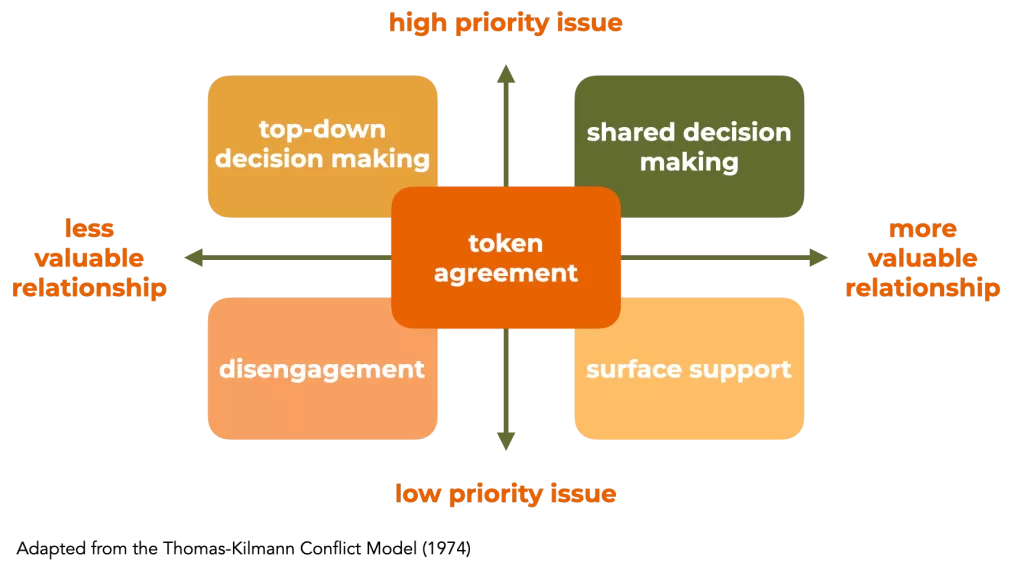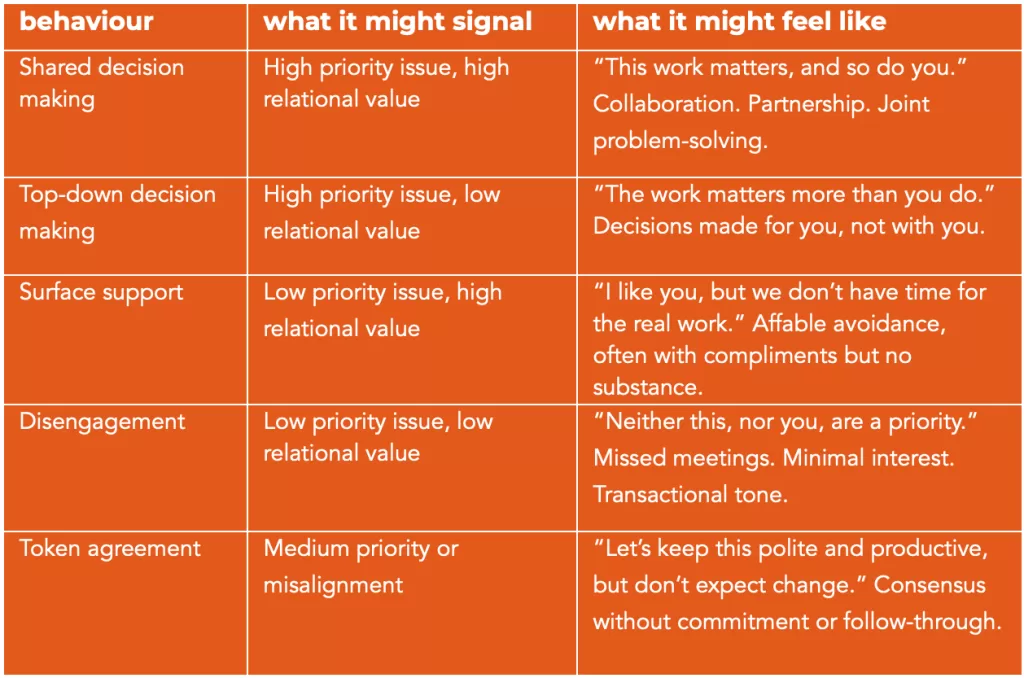In my recent post, From Oversight to Insight, I made the case that line-management conversations, when thoughtfully led, can be quietly transformative. They’re not just accountability checkpoints — they’re opportunities to build clarity, capacity, and trust.
But what happens when those conversations don’t feel that way?
Sometimes, it’s not what’s said in a one-to-one that matters most — but how it’s said, how often, and what it reveals about the line-manager’s priorities.
To explore this, I’ve adapted the Thomas-Kilmann conflict model to frame line-management interactions not as conflicts, but as signals of how much a leader values a given issue, and how much they value the relationship.
Here’s what it looks like:

At the intersection of issue priority and relational value, different leadership behaviours emerge — and each tells us something about the culture that’s being cultivated.

Paranoia or sixth sense?
It’s easy to feel disheartened when interactions consistently fall into the surface support, top-down, or disengagement zones. You start to wonder: Is it just me? Am I imagining this? But as the saying goes, just because you’re paranoid doesn’t mean they’re not out to get you. Sometimes, your sixth sense is accurate. Patterns matter — and noticing them isn’t overthinking, it’s professional awareness.
Still, before writing off the relationship altogether, it’s worth testing the waters:
- Seek specificity. Push back gently on vague praise: “Thanks — could you share a bit more about what stood out or what you’d like me to build on?” This can help steer the conversation from politeness to substance.
- Reframe the purpose. Ask: “Could we use our next meeting to dig into X? I’d love to think that through together.” This signals that you’re ready for a more purposeful exchange.
- Offer clarity. If something matters to you, say so: “This feels important to me — could we spend a bit of time on it?” You’re inviting your line-manager to see the issue through your lens.
What If Nothing Changes?
Sometimes, despite your best efforts to reframe, clarify, and engage, the pattern holds. Each one-to-one still feels rushed, transactional, or politely (or not so politely) evading. That, in itself, is useful information.
Leadership reveals itself not only in what is said, but in what is prioritised. Kotter reminds us, “what gets scheduled gets done.” When your line-manager’s calendar, tone, and follow-through consistently signal low priority, it’s time to protect your own sense of purpose.
Here’s what you can do:
- Widen your leadership circle. Seek mentorship, insight, or affirmation from others in the organisation. Fullan argues that leadership is a not a job title: you may find guidance in peers, coaches, or informal mentors.
- Document with intent. Keep brief, professional records of key meetings and agreed actions. This isn’t about defensiveness; it’s about clarity and ownership. It can also be helpful in tracking progress and patterns over time.
- Invest in your own development. Even if direct support is lacking, you can take steps to develop professionally. Coaching, reading relevant work or research, or joining a peer network can re-energise your thinking and restore momentum.
- Model professionalism. Covey reminds us to focus on our circle of influence. You may not be able to fix the relationship, but you can choose how you respond, what you model, and where you invest your energy.
- Reflect. If the relationship is eroding your confidence or sense of professional identity, speak to someone you trust. Don’t let a single leadership relationship define your entire sense of worth.
In Closing
The quality of your line-management conversations is a strong proxy for how much your voice and work are valued.
But remember this cuts both ways: When you’re the one leading the meeting, what messages are you sending?
- Are you listening as well as directing?
- Are you investing in the person, not just the project?
- Are you building shared decision-making — or just maintaining polite distance?
Conversations shape culture. Not once a year, but week by week.
So next time you sit down for a one-to-one — in whichever seat — ask yourself not just what you’re discussing, but what kind of relationship you’re reinforcing.
References and Further Reading
Buck, A. (2017) Leadership Matters: How leaders at all levels create great schools. Woodbridge: John Catt Educational.
Covey, S. R. (2004) The 7 Habits of Highly Effective People: Powerful lessons in personal change. London: Simon & Schuster.
Fullan, M. (2011) Change Leader: Learning to do what matters most. San Francisco: Jossey-Bass.
Kotter, J. P. (1996) Leading Change. Boston, MA: Harvard Business Review Press.
Thomas, K. W. and Kilmann, R. H. (1974) Thomas-Kilmann Conflict Mode Instrument. Tuxedo, NY: Xicom.
“The key is not to prioritise what’s on your schedule, but to schedule your priorities.”
— Stephen R. Covey (2004)
Subscribe to our newsletter
- Actionable insights on leadership, learning, and organisational improvement
- Thought-provoking reflections drawn from real-world experience in schools and beyond
- Curated resources on effective practice and digital strategy
- Early access to new articles, events, and consultancy updates
- Invitations to subscriber-only webinars, Q&As, and informal conversations
- Clarity, not clutter—you will not be bombarded by emails
Cancel or pause anytime.

Leave a Reply